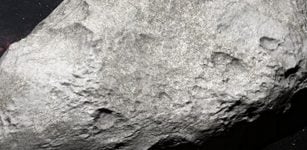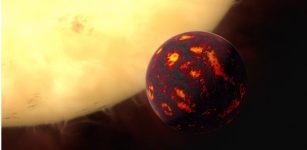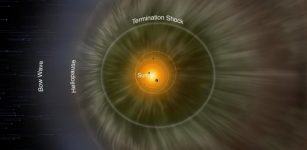Bright Craters On Dwarf Planet Ceres – New Images From NASA’s Dawn Mission
MessageToEagle.com – NASA’s Dawn spacecraft presents spectacular images of bright craters on the dwarf planet Ceres. The pictures were taken 386km (240 miles) from the surface of Ceres, during the spacecraft’s final and closest orbit.
In its lowest-altitude mapping orbit, at a distance of 240 miles (385 kilometers) from Ceres, Dawn has provided scientists with spectacular views of the dwarf planet.
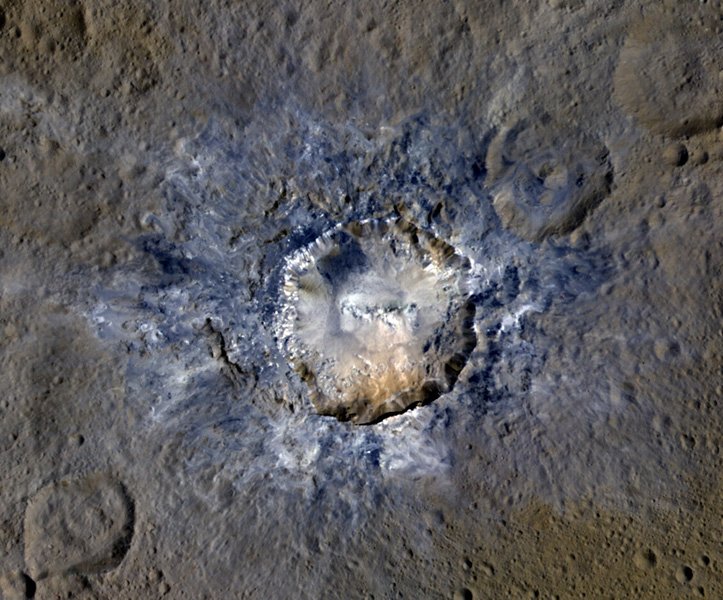
Haulani Crater, with a diameter of 21 miles (34 kilometers), shows evidence of landslides from its crater rim. Smooth material and a central ridge stand out on its floor. An enhanced false-color view allows scientists to gain insight into materials and how they relate to surface morphology. This image shows rays of bluish ejected material. The color blue in such views has been associated with young features on Ceres.
“Haulani perfectly displays the properties we would expect from a fresh impact into the surface of Ceres. The crater floor is largely free of impacts, and it contrasts sharply in color from older parts of the surface,” said Martin Hoffmann, co-investigator on the Dawn framing camera team, based at the Max Planck Institute for Solar System Research, Göttingen, Germany.
The straight edges of some Cerean craters, including Haulani, result from pre-existing stress patterns and faults beneath the surface.
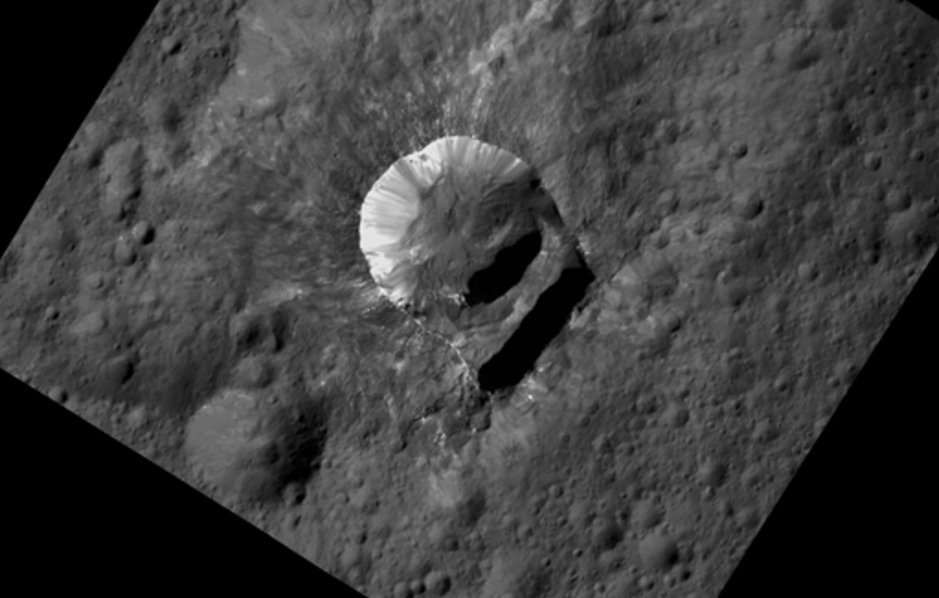
A hidden treasure on Ceres is the 6-mile-wide (10-kilometer-wide) Oxo Crater, which is the second-brightest feature on Ceres (only Occator’s central area is brighter). Oxo lies near the 0 degree meridian that defines the edge of many Ceres maps, making this small feature easy to overlook.
Oxo is also unique because of the relatively large “slump” in its crater rim, where a mass of material has dropped below the surface. Dawn science team members are also examining the signatures of minerals on the crater floor, which appear different than elsewhere on Ceres.
“Little Oxo may be poised to make a big contribution to understanding the upper crust of Ceres,” said Chris Russell, principal investigator of the mission, based at the University of California, Los Angeles.
MessageToEagle.com
Expand for references



